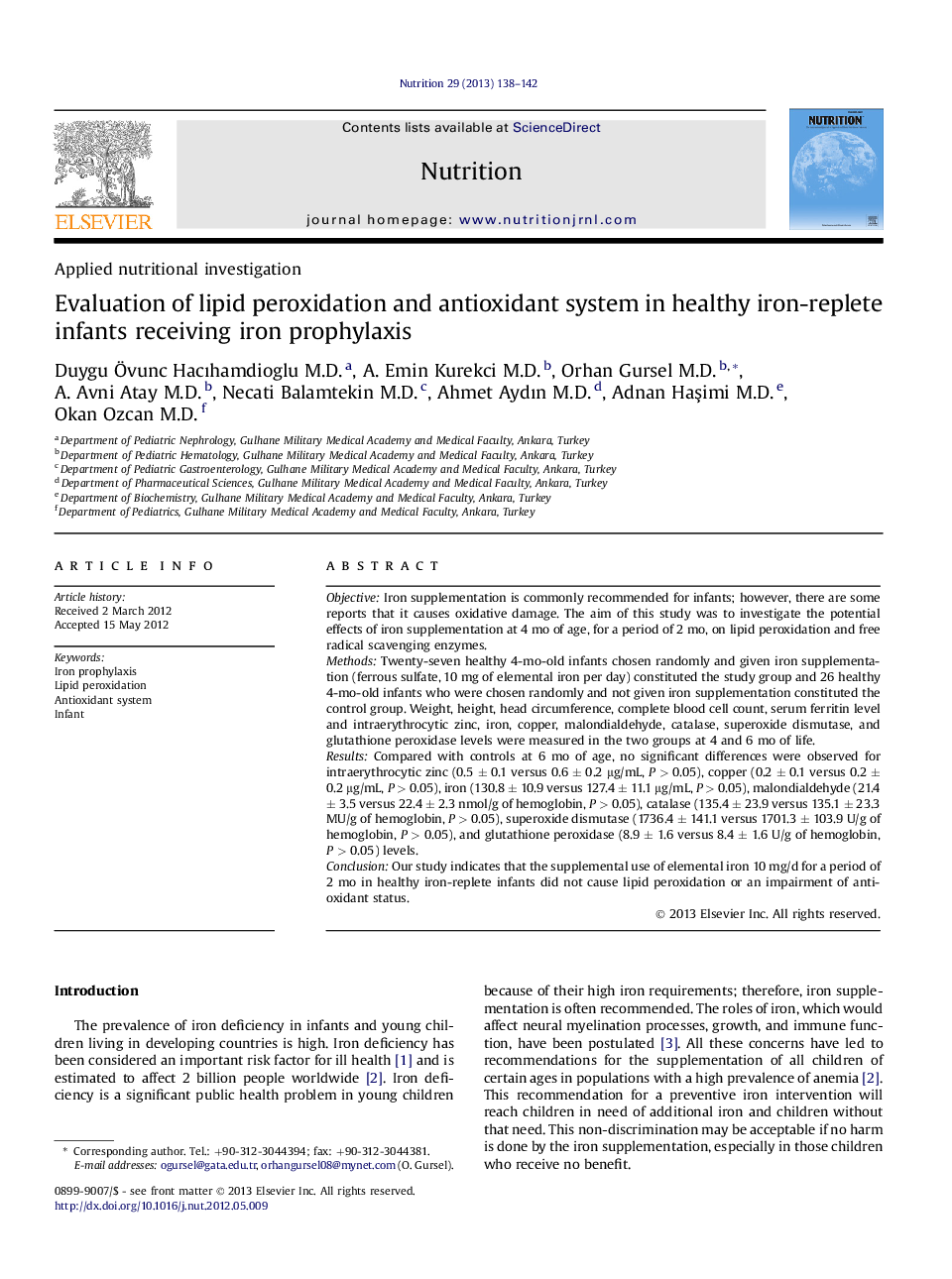| Article ID | Journal | Published Year | Pages | File Type |
|---|---|---|---|---|
| 6090091 | Nutrition | 2013 | 5 Pages |
ObjectiveIron supplementation is commonly recommended for infants; however, there are some reports that it causes oxidative damage. The aim of this study was to investigate the potential effects of iron supplementation at 4 mo of age, for a period of 2 mo, on lipid peroxidation and free radical scavenging enzymes.MethodsTwenty-seven healthy 4-mo-old infants chosen randomly and given iron supplementation (ferrous sulfate, 10 mg of elemental iron per day) constituted the study group and 26 healthy 4-mo-old infants who were chosen randomly and not given iron supplementation constituted the control group. Weight, height, head circumference, complete blood cell count, serum ferritin level and intraerythrocytic zinc, iron, copper, malondialdehyde, catalase, superoxide dismutase, and glutathione peroxidase levels were measured in the two groups at 4 and 6 mo of life.ResultsCompared with controls at 6 mo of age, no significant differences were observed for intraerythrocytic zinc (0.5 ± 0.1 versus 0.6 ± 0.2 μg/mL, P > 0.05), copper (0.2 ± 0.1 versus 0.2 ± 0.2 μg/mL, P > 0.05), iron (130.8 ± 10.9 versus 127.4 ± 11.1 μg/mL, P > 0.05), malondialdehyde (21.4 ± 3.5 versus 22.4 ± 2.3 nmol/g of hemoglobin, P > 0.05), catalase (135.4 ± 23.9 versus 135.1 ± 23.3 MU/g of hemoglobin, P > 0.05), superoxide dismutase (1736.4 ± 141.1 versus 1701.3 ± 103.9 U/g of hemoglobin, P > 0.05), and glutathione peroxidase (8.9 ± 1.6 versus 8.4 ± 1.6 U/g of hemoglobin, P > 0.05) levels.ConclusionOur study indicates that the supplemental use of elemental iron 10 mg/d for a period of 2 mo in healthy iron-replete infants did not cause lipid peroxidation or an impairment of antioxidant status.
